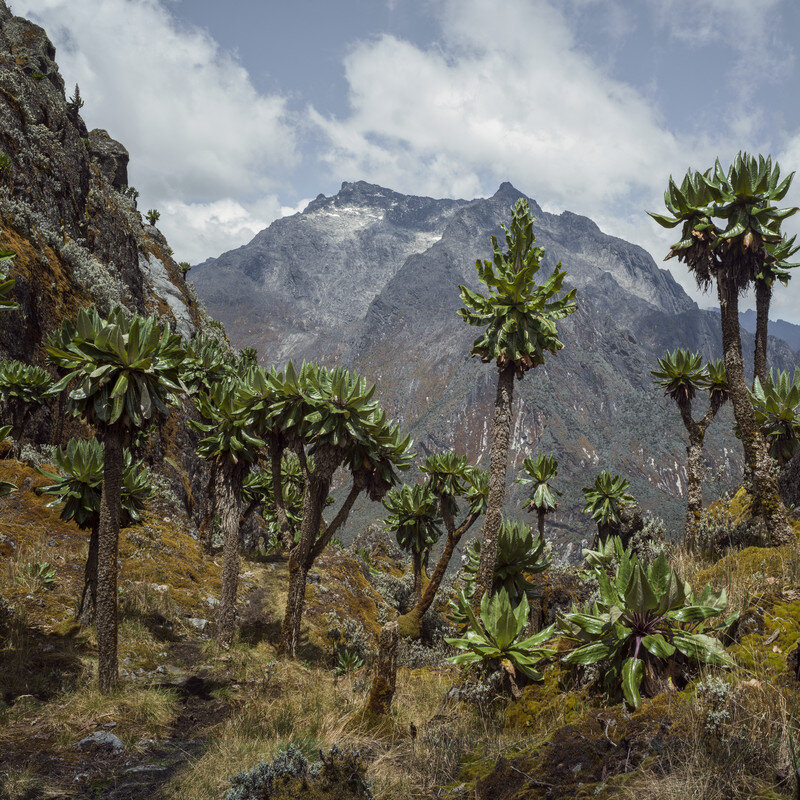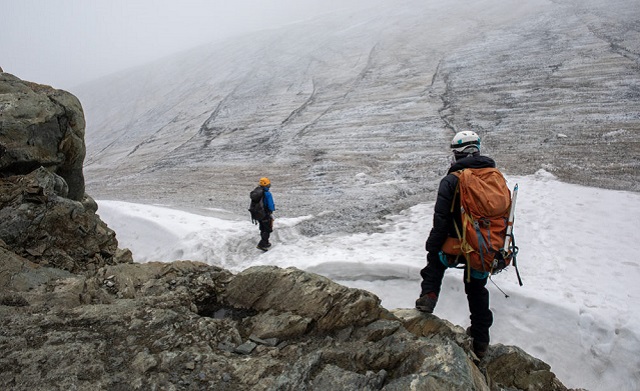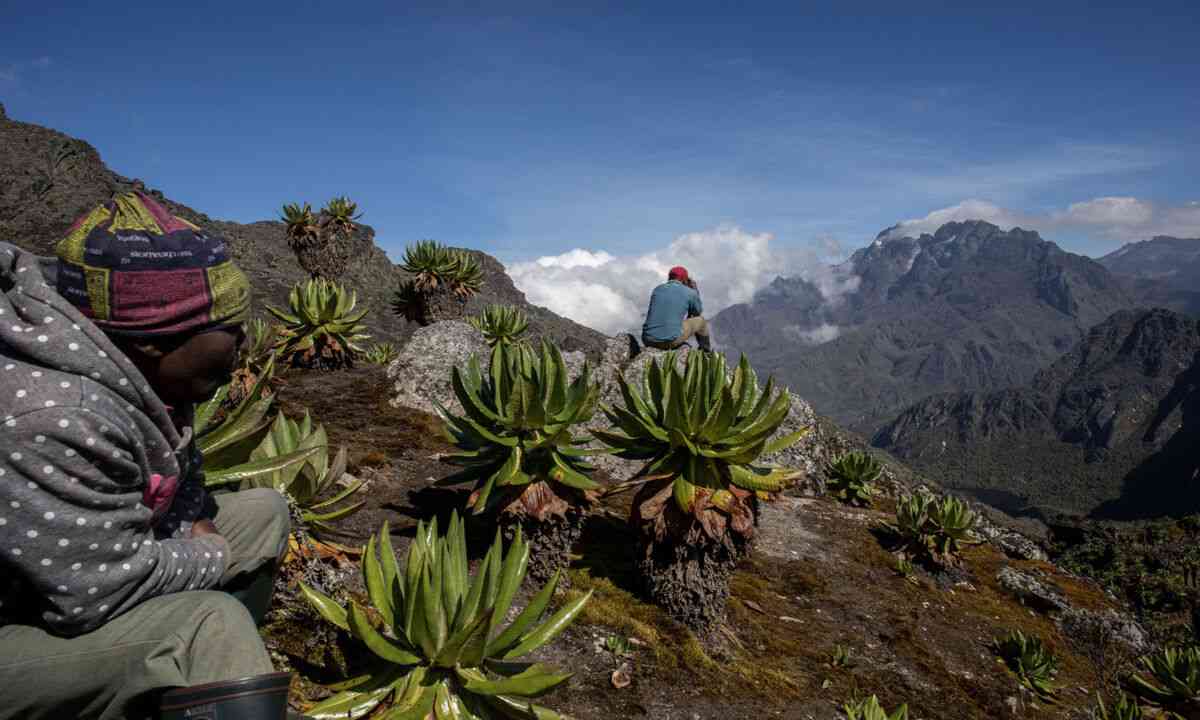Leaving the developed slopes of the town, we crossed the recreation area line and before long entered tropical backwoods, where gem-like blossoms looked free from goliath greeneries and monkeys emerged and disappeared as fog sieved through buttressed hardwoods.
After trekking through bamboo forest and ascending to a height of 12,800 feet (3,900 meters), we reached the ethereal Afro-Alpine moorlands, which are home to endangered, endemic, and uncommon species.

We traversed spongy moss bogs, silent rivulets, grassy tussocks, and slick tree roots over the course of two days. Stubbles of lichen waved from the parts of Goliath heather trees. Rwenzori red duikers, a jeopardized subspecies of impala, gazed from thick shrubberies of papery silver everlastings.
The plants, interestingly adjusted to their territory, got more peculiar as we climbed. The valley floor was littered with huge groundsels. Their spiky green pom-poms make them seem to be palm trees, however, their shaggy layers of dead leaves shielded them from the virus.
In the Rwenzoris and elsewhere, plants and animals are seeking cooler temperatures as the planet warms. They can only go so far, though. According to Penn State researcher Sarah Ivory, "they will just step their way off the top of the mountain" eventually.

Bwambale told us as we hiked, "You find rock hyrax footprints on the glaciers now." The duikers are the same.
We also noticed some changes on the fifth day. We discovered that a glacier-fed pond in the valley between Mount Baker and Mount Stanley had almost vanished when we held up one of Sella's photographs to compare it to the landscape of today.
According to a 2019 paper in Geosciences, the three highest points in Africa have all lost a significant amount of ice over the past century. On Tanzania's Mount Kilimanjaro, the most noteworthy point in Africa, the ice has contracted by 90% since its most memorable study in 1912, to under 1 square mile.
The glacial masses on Mount Kenya, Africa's second most noteworthy pinnacle, are under a 10th of a square mile. In 1906, glaciers in the Rwenzoris, which have received little attention, covered an estimated 2.5 square miles. They covered less than one square mile in 2003. They are even smaller today.

Although glaciers are retreating everywhere, the reasons for this vary from location to location. Warming air is the issue in the Rwenzoris, where glaciers are found at relatively low elevations of 14,400 feet (4,400 meters).
The mountains, whose name signifies "downpour creator" in the neighborhood language, get 6 to 10 feet of precipitation a year, so the ice sheets are not being famished of water they are simply liquefying quicker than downpour can freeze and supplant the dissolved ice. However, precipitation has decreased on Mount Kenya and Mount Kilimanjaro, where ice forms at higher elevations. The ice is vanishing into the dry air here.
As per the Mountain Exploration Drive, a worldwide temperature alteration is speeding up the pace of progress in mountain environments, cryospheric frameworks, hydrological systems, and biodiversity. As a result, all high-elevation ice is disappearing.
© Copyright 2023. All Rights Reserved Powered by Vygr Media.
























